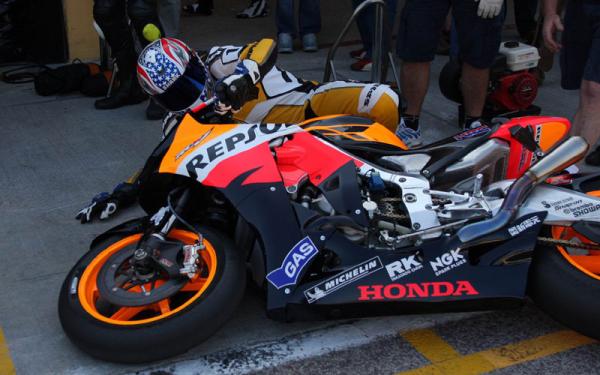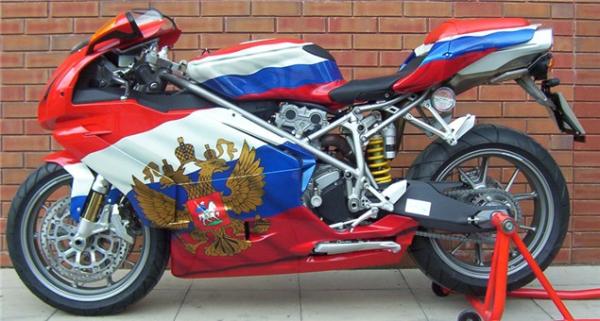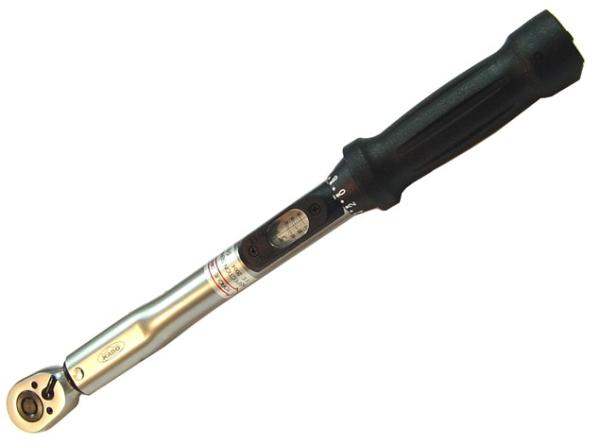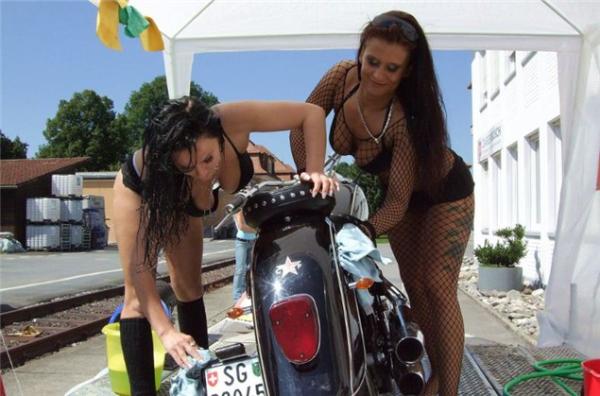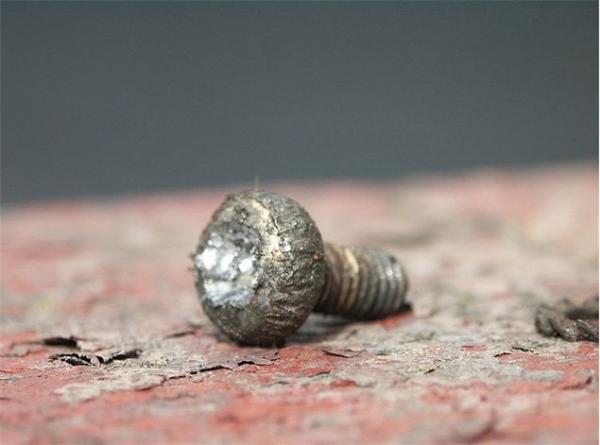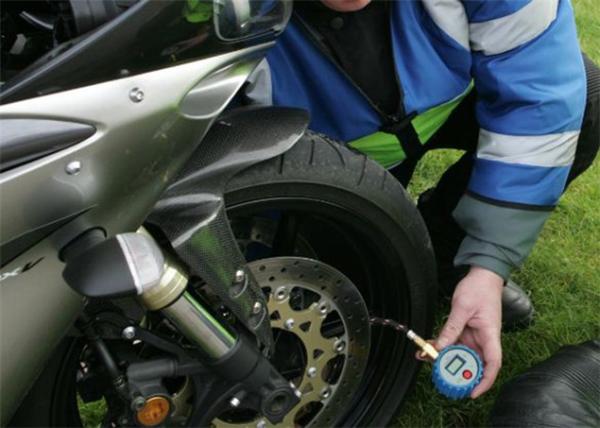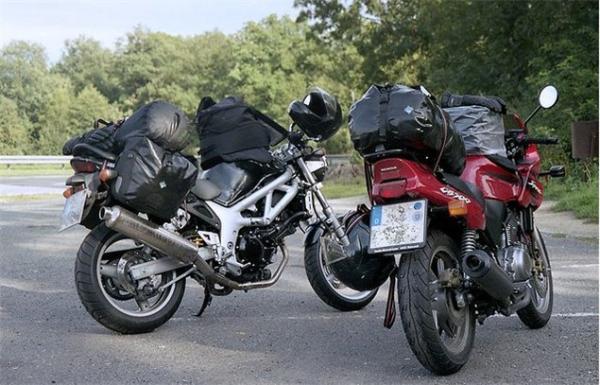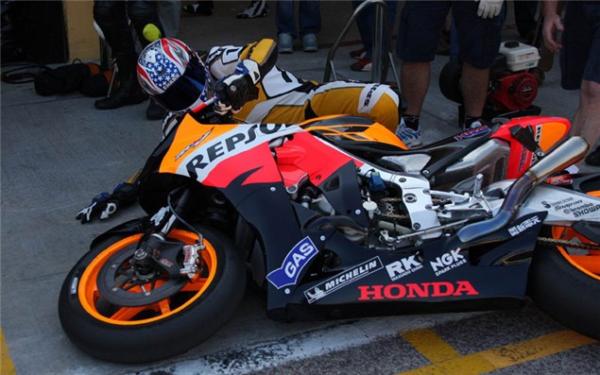Top 10 things you should never do to your motorcycle
New to biking? Have a headstart with Visordown's guide to common mistakes which must be avoided.
1. Correct chain tension is a must
IF YOU WANT to avoid knackering your bike's sprockets, prematurely wearing out the gearbox bearings and preventing the rear suspension from working properly then make sure your chain's correctly adjusted.
Refer to the owners' manual for the recommended amount of slack, and check it with the bike on its side-stand, not a centre-stand or paddock stand, as you need some weight on the shock to replicate riding conditions. It's even worth getting a mate to sit on it if you can.
Check it at several points by rolling the bike back and forth. The free-play should be consistent throughtout. If there are tight spots then it could signal the chain is getting towards the end of its life and needs replacing.
Lube the chain while you're at it, too. Watch our video guide to chain maintenance below.
2. Custom paint job
Popular in Moscow but maybe not in Moss Side
APART FROM COSTING anywhere up to £3,000 for a decent full-on custom paint job, altering your bike's original colours can drastically reduce its resale value.
All the dealers we spoke to said they always offer better trade-in prices for bikes with original paint, as custom-painted bikes could signal a machine's been crashed.
What's more, not everyone wants to be seen on a bike with 'Grim Reaper' or 'RIZLA' splashed down the side of their vehicle.
3. Overtighten bolts
Torque wrench - a must for any home mechanic
ASK ANY DECENT motorcycle mechanic for one of the most common mistakes they see while working on other people's machines and most will say overtightened bolts.
Using too much force when tightening your bike's bolts can lead to stripped threads, damaged bolt heads and knackered sump plugs, to name just a few.
The answer? Use a torque wrench - available from any good motoring shop - to give an accurate idea of the force needed to tighten your bike's bolts. Watch the MotoGP mechanics when they're working on the bikes - a torque wrench is never usually far from hand.
For your bike's specific torque settings check with the owners' manual.
4. Leave your bike covered in winter grime
Seek help if needed
MOTORCYCLE AND winter grime do not mix. Leaving your bike unwashed and plastered in road salt is a surefire way of decimating its finish and resale value.
Many dealers told us they'd seen lots of low mileage bikes suffering from salt corrosion because the owner thought it would be okay to wash it later in the week - only to find corrosion had taken hold of all the bare metal parts when they opened the garage door days later.
We gather the problem is even more common on bikes being returned to dealers at the end of PCP finance terms, so watch out for corrosion on late second-hand machines too.
The dealer's advice?
"It takes less than 10 minutes to give a bike a quick wash with car shampoo and a thorough rinse - it's a must if you're going to ride your pride and joy in winter. A liberal dousing of anti-corrosion spray is a good idea, too."
5. Use cheap tools
Get a good quality tool kit if you want to avoid this
USING POOR QUALITY or incorrect tools usually results in some kind of damage that could have been avoided if the owner had used decent equipment instead.
Mole grips, the chosen weapon of many workshop bodgers, are useful for many jobs but should never be used as a substitute for a decent spanner. What's more, the tool kit supplied with many motorcycles will be just about good enough to adjust your chain - at a push. So it's worth investing in a set of decent quality tools if you're planning on spannering your own bike at home.
Use in conjunction with a good quality torque wrench.
Halfords do decent-value mechanics' tool kits for around the £200 mark.
Halfords have a great value tool kit with most of the stuff you'll need for basic home servicing and more for £189.99.
6. Ride with worn tyres/incorrect pressures
Tyres: must be the correct pressure and in good condition
INCORRECT tyre pressures or badly worn rubber can seriously effect a motorcycle's handling, so always make sure your tyres are in tip-top condition.
Under-inflation can lead to instability while braking, cornering and general riding. It can also cause the tyre to overheat and wear unevenly.
Over-inflated tyres give a smaller contact patch on the road, a harsher ride and reduced tyre life.
Pressures should be checked using a reliable gauge. Correct tyre pressure settings can be found in the owner's manual.
The law states tread-depth must be at least 1mm, forming a continuous band at least three-quarters of the breadth of the tread and all the way around the tyre. We'd suggest replacing them long before they reach 1mm.
Your bike's handling - and safety - depends partly on correctly inflated tyres kept in tip-top condition.
7. Park in a dodgy place
Wouldn't fancy explaining this to the owners
IT TAKES less than a second for your bike to topple over but can cost a fortune to repair, so spend a few minutes finding somewhere suitable to park it.
Look for firm, even ground and use a sidestand puck for maximum stability.
And if you're thinking of parking in a poorly lit area in a dodgy part of town infested by hoody-wearing yobs with a penchant for joy-riding, then don't. Find somewhere completely different to park, with none of those features.
8. Rush your first strap on
Attaching luggage? Never hurry
IF YOU'RE planning a trip away on your bike you may be contemplating the idea of attaching soft luggage.
Fitting and filling fabric panniers correctly is a job requiring some prior thought and a fair bit of common sense. Never be tempted to rush strapping on soft luggage 10 minutes before you're due to leave. Take an evening or two to work through different options for the best fit.
It's essential the rider ensures none of the luggage or strapping fouls any of the bike's moving parts - a pannier in the back wheel at 100mph isn't funny. In fact it's deadly.
It's also worth checking the bags don't touch the bike's exhaust system, or you may find half your kit's gone awol when you get to your planned destination.
Watch our guide to fitting soft panniers below.
9. Sell your bike's original bits
Recoup a few quid selling the original parts? Don't do it
IF YOU'RE planning on adding a few tasty modifications to your bike then think about keeping the original parts so you can replace them when the time comes to sell.
Some owners spend a fortune on modifying, with stuff like an exhaust system, lightweight wheels, rear-sets, multi-adjustable levers and carbon bits. It can then be tempting to flog the original parts to recoup some of the outlay. But it's a false economy as one dealer told us: "We don't give any extra cash at trade-in for bikes with lots of extras. In truth, we probably give more for machines that are 100%. So my advice is to take off the expensive extras, flog them on eBay and return the bike to standard."
And remember, when it comes to older or classic machines, standard is trick.
10. Lend your bike to just anyone
"Can I have a go?"
AND FINALLY, never, EVER lend your bike to anyone unless you're totally happy they're fully insured, competent on a bike and not liable to ride like a tw@t.
We've seen a crash or two over the years at Visordown, some involving our own bikes that we've lent to someone only to regret it moments later. Friendships have perished.
But the prize for the most embarrasing crash must go to the chap in the picture above. The journalist, who we'll refrain from naming, was given the chance to ride one of the greatest MotoGP bikes of all time: Honda's 990cc RC211V.
So imagine how this guy felt when he dropped Nicky Hayden's multi-million dollar racer in the pit lane at Valencia.
A version of this article was first published on August 6, 2012.
